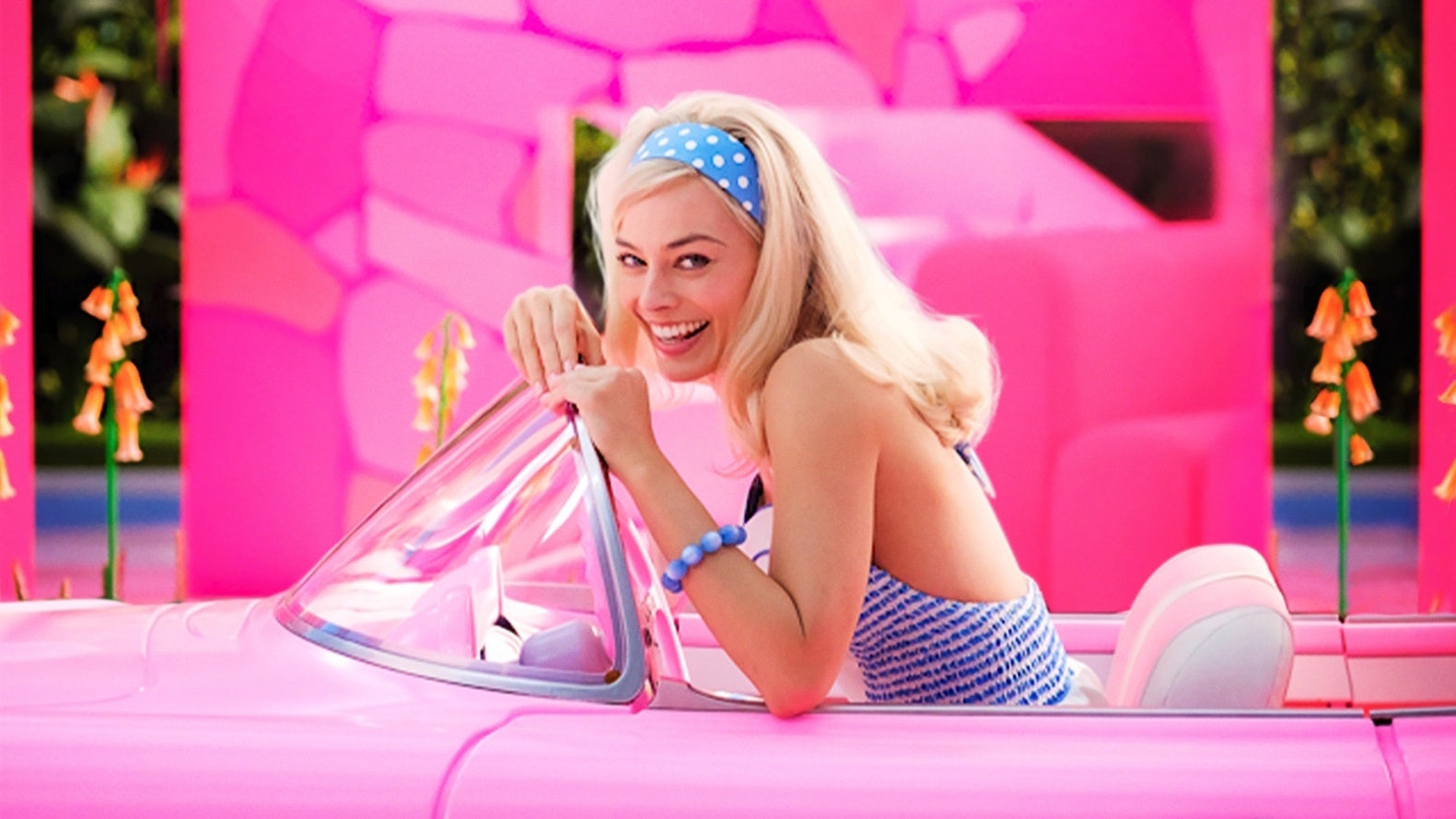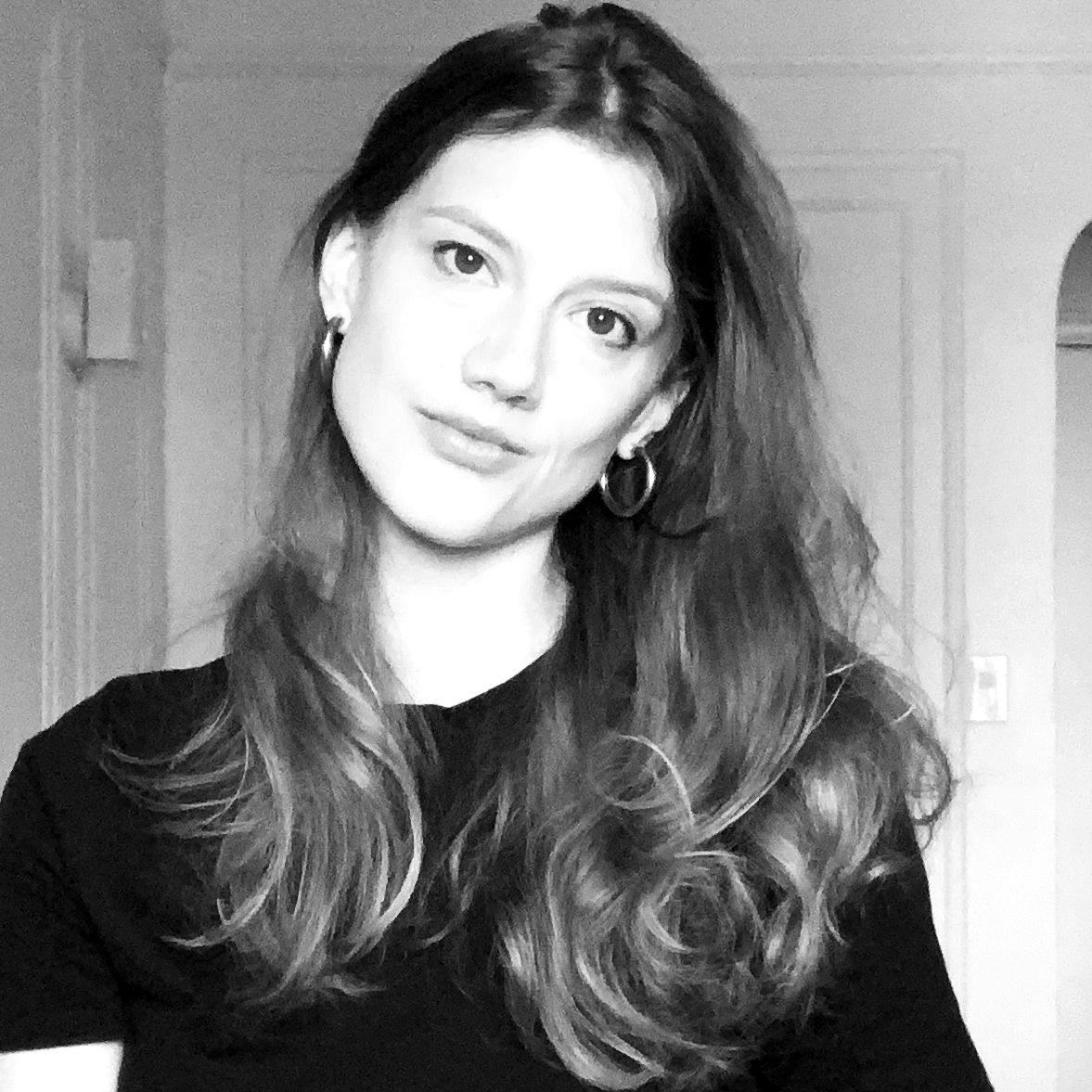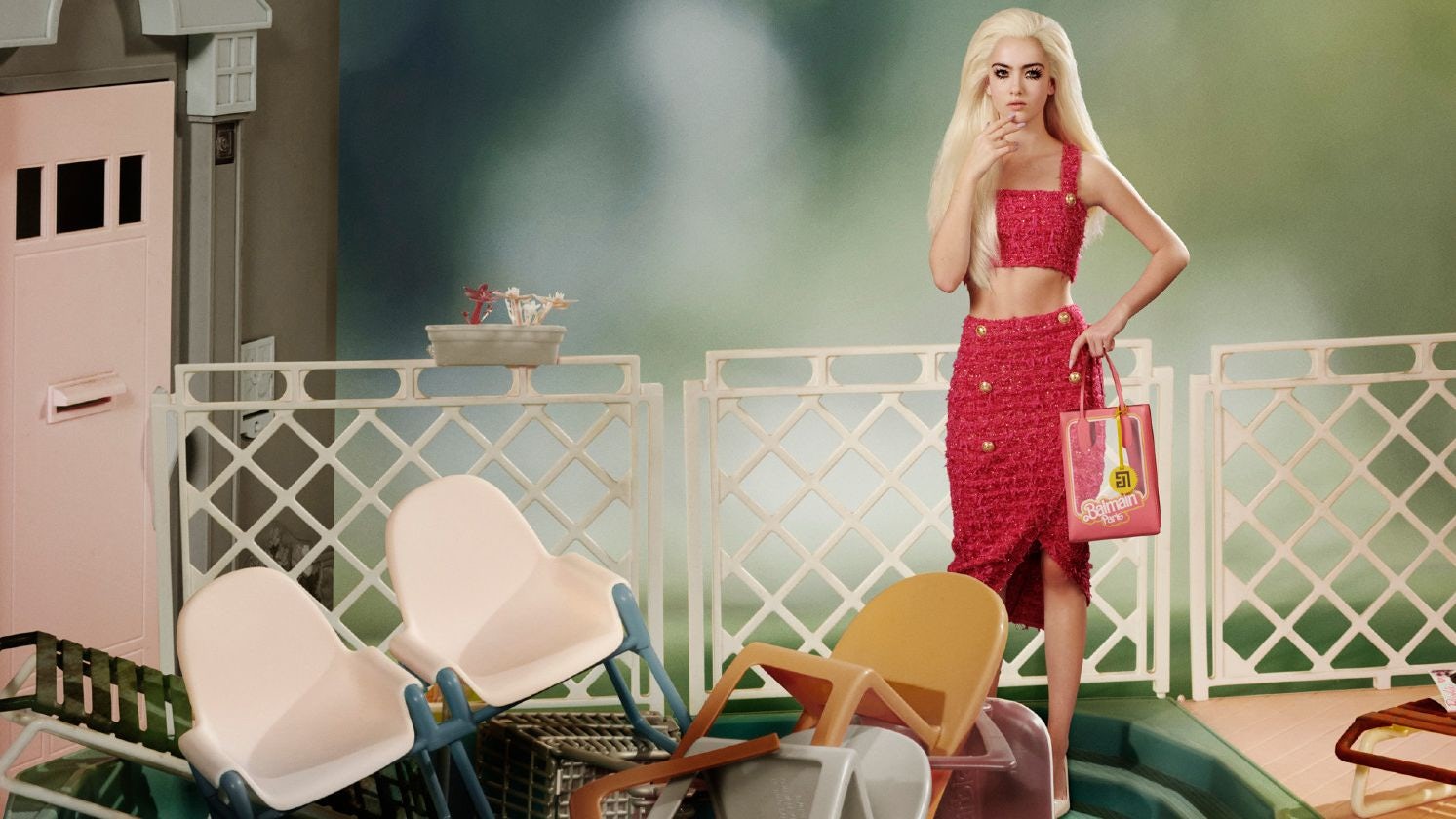Ever since the first behind-the-scenes photos of the upcoming Barbie movie were leaked last summer, the internet has been rife with all things pink. Snaps of stars Margot Robbie and Ryan Gosling, who play Barbie and Ken, respectively, in neon spandex and shocking pink cowboy attire, and even of director Greta Gerwig wearing a pink jumpsuit onset, quickly spread online, sparking a craze (or at the very least a trending social media hashtag) for all things Barbiecore.
The Barbie movie itself is still over a month away from hitting theaters. And yet Barbiecore has achieved surprising longevity. In an era of nonstop “cores” and fast-burning social media trends, Barbiecore is soldiering on, nearly a year since the term emerged.
Silver screen turns pink#
Versace and Chanel’s recent runway shows in Cannes and Los Angeles, respectively, were Barbiecore; beauty trends like Jessica Chastain’s icy blonde hair at the 2023 Met Gala were Barbiecore; and Valentino has had a field day with its on-trend signature shocking pink.
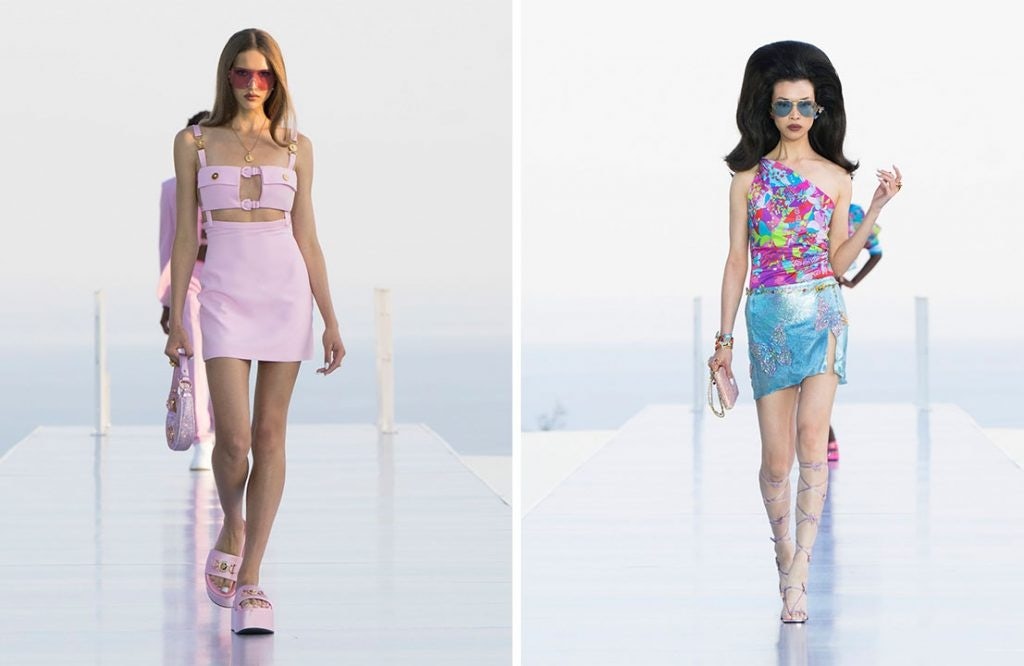
Meanwhile, Pantone’s 2023 Color of the Year is Viva Magenta, a more sophisticated Barbiecore tone. Even interior design trends are referencing Barbiecore with pink walls and accessories — if aspiring Barbies can get their hands on any paint that is, as the movie’s set designers reportedly contributed to a global shortage of pink paint.
But the broad swath of labels embracing Barbiecore isn’t just the result of brands and outlets jumping on a trending term, rather, it’s also a reflection of Barbie’s key appeal. Whereas trending styles like “coastal grandma” or “blokecore” often offer a narrow, easily recognizable set of style guidelines, Barbiecore is an open playing field.
As exemplified in Robbie’s recent Vogue cover shoot promoting the film, Barbie can encompass just about any era and style, from 80s power skirt suits to space age astronaut. There is no singular Barbie; she can be anything to anyone.
Inclusive vision#
Despite her evolving image, throughout much of her history, Barbie has been consistently blonde, thin and white. And while the movie stars the tanned and blonde Robbie as the central Barbie, Gerwig’s vision makes the doll a canvas that almost anyone can see themselves in.
The film boasts an ensemble cast of actors of diverse ethnicities and body types, like Insecure’s Issa Rae, Bridgerton’s Nicola Coughlan and Sex Education’s Ncuti Gatwa, all of whom populate the world of Barbies and Kens.
And the stars of Barbie recognize the power they wield in taking up the doll’s iconic name. In an Instagram post, actress Hari Nef shared the letter she wrote to Gerwig to illustrate how meaningful it was for her to appear in the Barbie movie as a trans woman: “We call ourselves ‘the dolls’ in the face of everything we know we are, never will be, hope to be. We yell the word because the word matters. And no doll matters more than Barbie.”
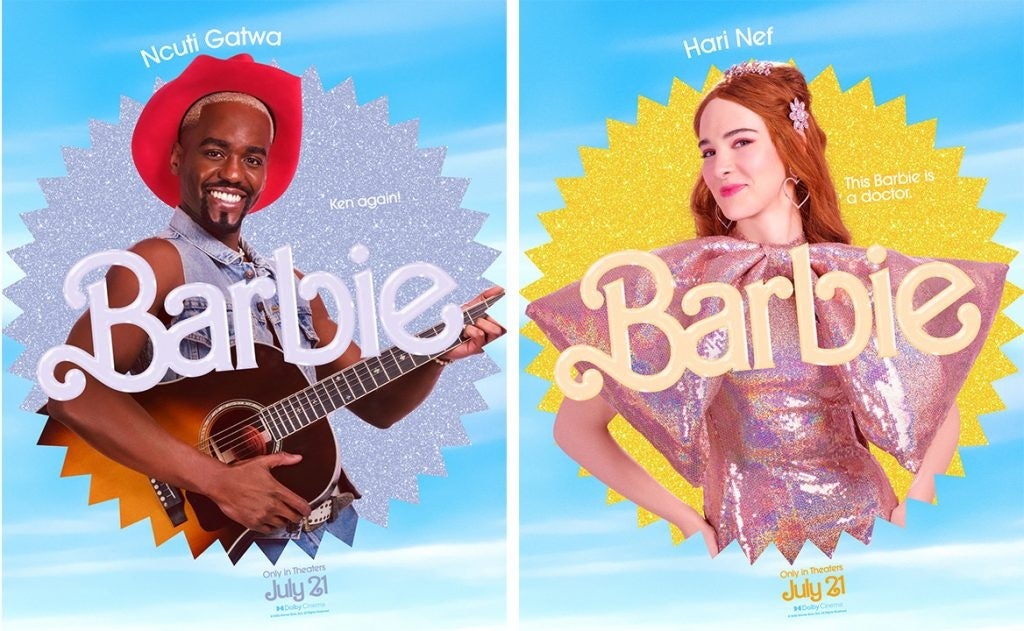
The Barbie marketing team smartly capitalized on audiences’ desires to see themselves as the doll by releasing a Barbie poster selfie generator as part of the film’s promotional activities. The templates inspired users to not only envision themselves as Barbie or Ken, but numerous pop culture figures like Kendall Roy of Succession and Gwyneth Paltrow in the midst of her ski collision trial.
But Barbiecore isn’t a hit everywhere. On Chinese social media, the term hasn’t taken off. The hot pink shade associated with the doll has been deemed an unflattering "dead Barbie pink." The shocking shade is perceived as making wearers’ skin look darker, a downside in a culture where fair skin is still the ideal.
Feminine power#
While Barbie’s style is adaptable to numerous eras and aesthetics, one thing never changes: Barbie is hyper-femininity personified.
In an era when gender roles are more openly blurred and gender-fluid styles are rising in fashion, Barbie’s ultra-femininity might appear restrictive or retro. Instead, for some contemporary consumers, the doll symbolizes the opportunity to celebrate womanhood and showcase the fact that a girlish aesthetic isn’t incompatible with intelligence or power.
“It’s turning the notion on its head, finding power in a [Barbie-like] exaggerated wonderfulness of being a woman,” stylist Erin Walsh is quoted in the media as saying of Barbie’s appeal. “And how awesome is that at this moment when some of our basic rights are being taken away from us?”
Director Gerwig made her name with movies like Lady Bird and Little Women that depict young women tackling questions of identity and self-determination, and it stands to reason that her version of Barbie will depict the doll as more than a simple plaything — if anything, the role of accessory, or arm candy, goes to the men this time.
“Ken was invented after Barbie, to burnish Barbie’s position in our eyes and in the world,” Gerwig told Vogue in Robbie’s recent cover story. “That kind of creation myth is the opposite of the creation myth in Genesis.”
Barbie, with her impossible body proportions and permanently arched heels, has not been immune to feminist critique, however. As feminist activist Gloria Steinem put it, “Barbie was everything we didn’t want to be and were told to be.”
And yet, Barbie has remained an irresistible avatar for decades. Today’s viewers have reclaimed Barbie not as a restrictive stereotype but a symbol of endless possibilities and also irony. Perhaps Jeremy Scott summed it up best when speaking about his Barbie-inspired Moschino collection in 2014: “There are no other references because [Barbie] encompasses everything.”
